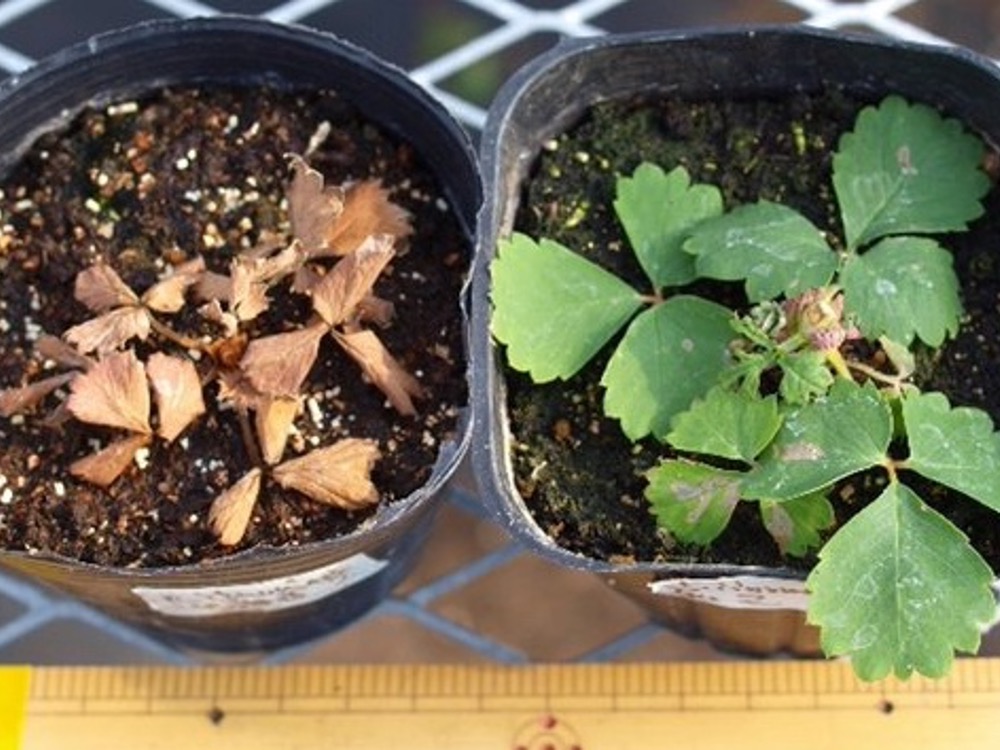Survey of Wild Strawberry Distribution in Japan

To identify genetic variations in wild strawberries that are beneficial for cultivation, we are conducting field surveys to determine where wild species with specific genetic traits and phenotypes are found. This project targets wild species collected from regions across Japan, from Hokkaido to Kyushu, each with distinct environmental conditions such as day length and climate. This research is also essential for the conservation of strawberry genetic resources.
Genetic Diversity of Wild Strawberry Species

Wild strawberry species collected from various regions across the length of Japan exhibit significant phenotypic differences, even within the same species. For example, the photo shows Fragaria iinumae. The dormant plant on the left, with above-ground parts wilted, is from the Nakayama Pass region of Hokkaido, while the plant on the right is from the Daisen region in Tottori Prefecture. The dormancy traits differ between these two populations, and by comparing their gene expression profiles, we can gain insights into the genetic factors involved in dormancy.
In addition to dormancy, other key physiological traits important for breeding—such as flowering, runner production, and environmental stress tolerance—require access to research materials with broad genetic variation. The wide range of environmental conditions across Japan makes it an ideal location for discovering wild strawberry genetic resources with valuable traits.
Recent research has also shown that environment-dependent phenotypic differences in Fragaria vesca are linked to variations in DNA methylation levels (López et al., 2022, Hortic Res)1 .
Sampling Wild Strawberries in Japan

In mainland Japan, wild strawberries of the genus Fragaria can only grow at elevations above 1000–1300 meters due to the heat, which means that mountain climbing is often required to locate them. In the mountainous regions along the Sea of Japan, Fragaria iinumae is native, while similar climates on the Pacific side are home to Fragaria nipponica and Potentilla species, which compete for the same ecological niche. Potentilla species often resemble Fragaria at first glance, so experience is required for identifying non-flowering wild strawberries.
Working Towards Becoming a National BioResource Hub for Strawberries

We preserve a diverse collection of wild strawberry strains collected from across Japan. Our aim is to establish Utsunomiya University as a National BioResource Project (NBRP) center, facilitating access to both wild and mutant strawberry strains. We encourage inquiries regarding these strains.
